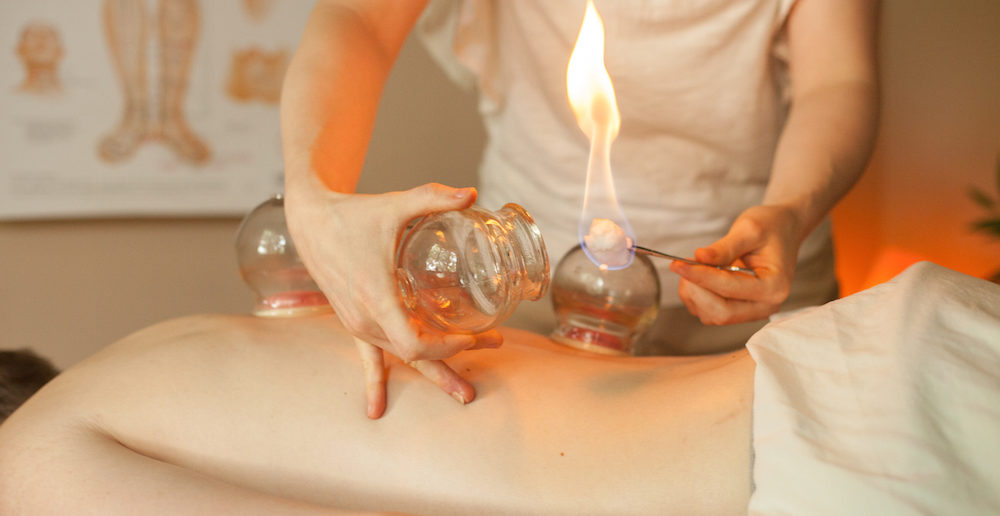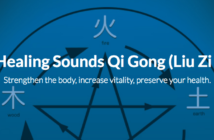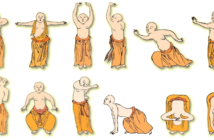More and more athletes are using alternative medical treatments like cupping therapy to aid muscle recovery. Now that you’re training in China and have access to traditional Chinese medical treatments at affordable prices maybe its time for you give it a try?
So what is cupping?
Cupping is an ancient form of TCM where the therapist uses cups on your skin. These cups suck the skin in for few minutes giving deep tissue massage to your body making the tissues relaxed. Cupping has been touted as a treatment for varicose vein, hemophilia or anemia, arthritis and fibromyalgia, as well as skin problems like eczema and acne.
Why are more athletes using it?
Popular among members of the USA track and field team and swimming teams. Therapists use it as a way to floss soft muscle tissue in order to get rid of subtle tissue lesions within certain areas of the body. Reported benefits include speedier recovery and improved muscle movement.
Another term for cupping is myofacial decompression (MFD). MFD is commonly used to therapeutically treat plantar fasciitis to hamstring strains to myofascial restrictions unrelated to injury.
Types of Cupping Therapy
Dry. In dry cupping, the therapist applies a cup on the skin’s surface with the use of a pump. Here, cups are usually made of plastic, and they are removed through suction. This technique draws the blood and the fluid away from any inflamed areas, bringing them to the skin’s surface. This type of cupping method shouldn’t be done on parts of the skin which have open wounds.
Treatment normally lasts for 10-15 minutes. Some cups can be placed on the skin during the therapy. However, the practitioner needs to keep observing the cups as he is applying them to the skin. Careful observation is needed to avoid blisters on the skin’s surface.
Areas of the body which are inflamed and painful will benefit significantly from dry cupping. This is because it eases congestion, allowing the blood of the body to flow better. Dry cupping can be done every day. A person can even self-administer the cups on his own body, as long as those parts are accessible. Cup tensions can vary from strong, medium or light.
Moving. This type of cupping is done using oil. The therapist applies the oil to the area which needs to be massaged. The cup is then placed on the skin with light tension. This differs from other types of cupping therapy because the cup placed on the skin can be moved.
The therapist usually moves the cup around in sliding or circular movements.Moving cupping can also be done anytime, and for however long the person wants.
Wet. For this type of cupping, the therapist first makes small scratches on the skin’s surface. To do this, a sterile blade is used. This is also done after a dry cupping session which lasts for about 3-5 minutes. After the scratches have been made, the cups are re-applied to the surface of the skin using suction. The pressure of the suction then extracts the blood which has accumulated. If the practitioner performs this procedure properly, it won’t leave any marks or scars behind.
Wet cupping is best when done on an empty stomach. So if a person is planning to have this kind of treatment, it’s recommended that he doesn’t consume anything before. After the cupping therapy, any strenuous physical activity should also be avoided, at least for the next 24 hours. Showering should also be avoided for the next 24 hours after wet cupping.
Side effects
While studying martial arts in China you might want to try this therapy on one of your rest days. But before you do you might wish to consider some of the possible side effects.
- When the cups are placed you can feel mild discomfort from the suction.
- The skin may get burnt owing to the heat of the cups initially placed when they were hot. This does not happen if you are being treated by a reputable therapist.
- Bruises, as the cups are sometimes moved on the skin surface to give a feeling of massage.
- You can also get skin infections due to the small cut made by the therapist to ooze out small quantities of blood if this is part of the treatment agreed upon.
- If the clinic is not clean and hygienic, you may also get some infections. Therefore finding a good reputable clinic is essential.




